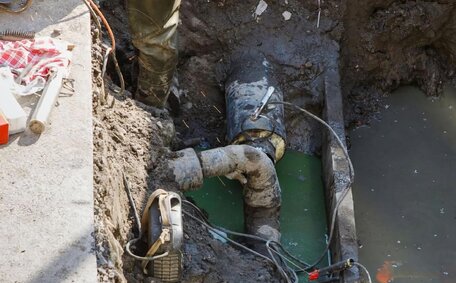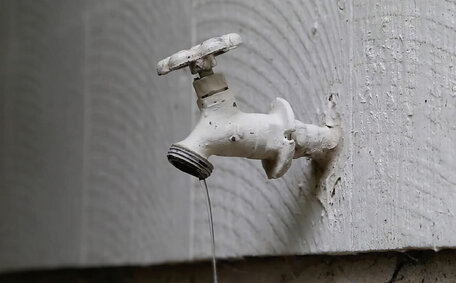Introduction: The Importance of Hot Water System Insulation
Having a well-insulated hot water system is crucial for any home or business in Quakers Hill, Sydney. Insulation plays a vital role in conserving energy usage and improving efficiency, which leads to lower energy bills and reduced environmental impact.
When hot water heaters and pipes aren’t properly insulated, heat will escape through conduction, causing more energy to be expended to keep water hot. This wasted energy amounts to higher electricity or gas costs over time. Insulating your hot water system essentially creates a barrier that prevents precious heat from dissipating into the surroundings.
Insulate your tanks with insulating jackets and your pipes with lagging to achieve savings of up to 50% on water heating expenses. Furthermore, reducing energy demands lowers your carbon footprint. Eco-conscious homeowners may also be eligible for rebates on insulation products and professional installation services.
This guide will explore the fundamentals of hot water insulation, detail DIY methods for insulating tanks and pipes, provide step-by-step installation instructions, and suggest additional energy-saving strategies to maximise savings.
Saving Energy and Money with Insulation
Insulate your hot water system to foster considerable energy and cost savings. By preventing heat loss, insulation enables your water heater to operate more efficiently. Well-insulated tanks and pipes help save energy as less is required to keep water hot.
Insulating hot water pipes specifically can raise your water temperature by 2°F-4°F. This added heat allows you to lower your thermostat setting without compromising comfort or usage. Turning down your water heater by 10°F can lower energy consumption by up to 5%.
Over time, even minor adjustments add up.
On average, insulating your hot water system can reduce expenses by 4-17% annually. For a household spending $400 per year on water heating, that equates to $16-68 in savings. The costs of insulation products and installation will pay for themselves in 1 to 3 years for most homes.
There are also long-term savings from equipment longevity. By retaining heat, insulation causes fewer runtimes, wear and tear on heaters, and likelihood of breakdowns requiring service calls or replacements. The energy efficiency benefits insulation too.
Reducing Heat Loss
Insulation works by slowing the rate of heat transfer. When applied to a hot water system, it prevents precious heat from escaping into the surroundings.
Common insulation materials like fibreglass, mineral wool, and rigid foam boards feature tiny air pockets that resist conductive heat flow. The thicker the insulation, the better its effectiveness. Tank blankets, pipe wrap, and lagging sleeves made from these insulators create a protective barrier that traps heat.
According to the Building Code of Australia (BCA), hot water pipes must meet minimum insulation standards based on location and climate zones. In cooler areas like Quakers Hill, Sydney, R1.5 insulation is recommended for hot pipes under 50mm diameter. This represents an R-value (thermal resistance) of 1.5.
Higher density insulation materials to consider are:
- Fibreglass batts - R2.2 to R3.2
- Mineral wool - R2.2 to R3.3
- Rigid polyurethane foam - R5.2 to R6.5
The higher the R-value, the better the product resists heat flow. Using above-standard insulation provides even more efficiency.
Pipe Lagging Basics
Pipe lagging refers to insulation wraps applied around hot water pipes to prevent heat loss. Materials like polyethylene foam and fibreglass sleeves create a thermal barrier that keeps pipes hotter for longer.
Lagging is secured directly over pipework and can be installed on straight runs or fittings like elbows and tees. It comes in various diameters to match different pipe sizes.
For electric water heaters, non-combustible lagging is essential for safely insulating pipes near resistance elements. On gas systems, closed-cell foam that resists moisture absorption prevents corrosion under appliances.
To insulate your system optimally, select lagging with a minimum R1.5 rating to meet Australian standards. Higher density products with reinforced foil layers offer superior efficiency.
With custom-fitting solutions secured firmly in place, quality lagging minimises wasted energy through exposed hot water pipes. This keeps more heat in the system so less is required to maintain temperatures.
Installing Pipe Lagging
Installing pipe lagging can be a straightforward DIY job if done properly. When working around gas water heaters, always turn off the pilot light and confirm it’s off before starting. Have your materials and tools prepared beforehand.
Follow these key steps:
- Measure the pipe lengths requiring insulation and cut lagging to suit. Allow for some compression. Securing clips may also be required.
- Clean pipes thoroughly - any dirt or dust will reduce effectiveness. Wipe down with methylated spirits.
- Apply adhesive to the seam of the lagging material so it seals tightly around pipes when pressed together.
- Wrap lagging around pipe, ensuring edges align. Don’t stretch or bunch material.
- Seal with adhesive and secure in place using tape or clips. Wrap foil or PVC over insulation for extra weatherproofing if needed.
- For bend points, use shaped lagging sleeves. Bends may need additional adhesive as they receive more wear.
- At junction points, ensure overlaps cover at least 50mm to maintain integrity. Foil joins should face downwards.
When installed correctly, quality lagging will provide a durable moisture barrier that retains heat and withstands elements. Seek professional help if uncertain about safely accessing pipework or managing gas pilot lights.
Properly lagged pipes enable you to save energy without risks. Maintain insulation effectiveness by checking for gaps during seasonal servicing.
Insulating Water Storage Tanks
Insulating external water storage tanks is crucial for reducing standby heat losses. Hot water tanks can waste substantial energy through their large surface area if left uninsulated.
Suitable insulation types for tanks include:
- Closed-cell spray foam
- Fibreglass batts with weatherproof barrier
- Rigid foam boards
Aim for at least an R2 rating by layering higher-density foams for optimal efficiency. Secure with weatherproof adhesive and seal joints with metal tape to prevent moisture ingress.
When insulating, allow access to fittings like inlet/outlet pipes, the thermostat, heating elements, and anodes. Don’t obstruct relief valves. Maintain recommended air gaps between insulation and fittings as per standards.
Set your water heater’s thermostat between 60°C-70°C to save energy while preventing bacteria and minimising standby heat losses.
Check insulation annually for gaps or damage which can occur over time. Refitting may be needed to maintain integrity and energy savings.
Additional Energy Efficiency Tips
Beyond insulation, there are several other ways to boost the energy efficiency of your hot water system:
- Service your system annually to check for problems like sediment buildup which makes heaters work harder.
- Inspect pipes and tanks regularly for leaks which waste hot water. Even small drips add up over time.
- Install water-saving showerheads and tap aerators to reduce demand on your heater.
- Set pipes to recirculate instead of running water to prime. Recirc systems conserve heat better.
- Insulate the first 1-2 metres of cold water inlet pipes to protect against ambient heat gains.
- Upgrade old heaters to modern, high-efficiency models for lower standby losses.
- Consider solar or heat pump water heaters that utilise renewable energy over gas or electric.
- Invest in smart technology like automated timers and temperature controls for optimised operation.
Taking a whole-of-system approach ensures your hot water system performs efficiently. Combined with proper insulation, these handy tips will maximise energy savings for years to come.
When to Call the Professionals
While DIY insulation projects can provide great energy savings, there are times when it’s best to call in a professional plumber for assistance.
Seeking professional help is advisable if you have any uncertainty when working around gas systems, pilot lights, pipe configurations in tight spaces, or applying insulation to delicate water heater components.
The team at Quakers Hill Plumbing have over 25 years of experience providing quality plumbing services in Quakers Hill and surrounding suburbs of Sydney. We specialise in hot water systems, with extensive expertise in:
- Insulation installation and repairs
- Maintenance of heaters, tanks and pipes
- Efficiency assessments and upgrade consultations
- Solar and heat pump systems
- Gas fitting for tanks and continuous flow units
- Rebates and financial incentives
Our family-owned business offers reasonable rates and always provides friendly and knowledgeable advice. We can assist residential homes and commercial properties with all plumbing needs.
For any queries about insulation or maximising the efficiency of your hot water system, call Quakers Hill Plumbing on 1300 349 338 or email jobs@quakershillplumbingservices.com.au.
Don’t hesitate to get in touch for professional assistance ensuring your hot water system is safely optimised for efficiency.






